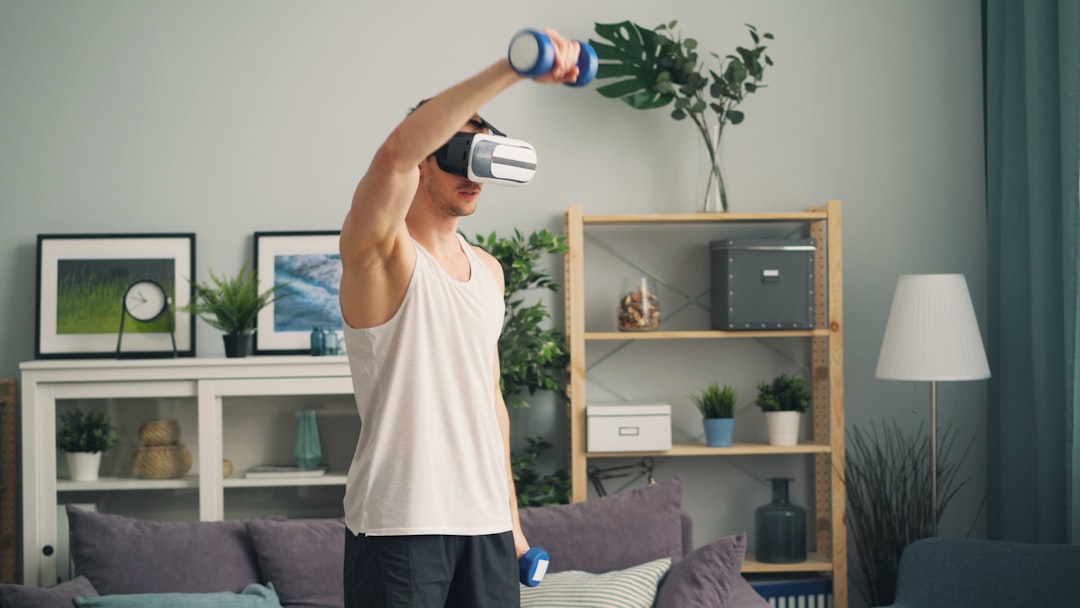“`html
Virtual Reality Fitness Booms: Sweat Smarter, Not Harder
Forget the treadmill blues. Virtual reality (VR) is shaking up the fitness world, turning mundane workouts into immersive, engaging experiences. No longer relegated to gaming arcades, VR technology is transforming living rooms into virtual gyms, mountain ranges, and even alien planets, all in the name of getting fit.
Why VR Fitness is More Than Just a Fad
The appeal of VR fitness goes beyond novelty. It addresses several key challenges people face with traditional exercise routines:
- Boredom: Let’s face it, staring at a wall while running is tedious. VR replaces that with dynamic, stimulating environments.
- Motivation: Gamified workouts and interactive elements provide a sense of accomplishment and keep you coming back for more.
- Accessibility: VR fitness apps offer a diverse range of workouts, suitable for all fitness levels and budgets, right in your home.
- Time Efficiency: Many VR workouts are high-intensity and can deliver significant results in shorter sessions.
The Science Behind the Sweat
VR fitness isn’t just about fun; it’s surprisingly effective. Studies have shown that VR workouts can lead to increased heart rate, calorie burn, and muscle engagement compared to traditional exercises. The immersive nature of VR can also lead to a higher perceived rate of exertion, meaning you’re working harder without even realizing it. A report from the BBC details how VR is now being used in pain management and mental health treatments, further solidifying its impact beyond entertainment.
The Impact of VR on the Fitness Industry
The VR fitness boom is already having a significant impact on the fitness industry:
- New Market Opportunities: VR fitness apps and hardware are creating new revenue streams for developers and manufacturers.
- Democratization of Fitness: VR makes fitness more accessible to people who may be intimidated by traditional gyms or lack access to expensive equipment.
- Increased Engagement: VR workouts are more engaging than traditional exercises, leading to higher adherence rates and better fitness outcomes.
- Personalized Training: Advanced VR fitness platforms are beginning to offer personalized training programs tailored to individual fitness levels and goals.
Examples of VR Fitness in Action
Several VR fitness apps are leading the charge:
- Beat Saber: This rhythm-based game requires you to slice blocks with lightsabers in time to music, providing a full-body workout without feeling like exercise.
- Supernatural: This subscription-based app offers guided workouts in stunning virtual environments, led by expert coaches.
- FitXR: This app provides a variety of fitness classes, including boxing, dance, and HIIT, in a social VR environment.
- The Thrill of the Fight: This boxing simulator offers a realistic and challenging workout, perfect for those looking to improve their strength and endurance.
Beyond apps, specialized VR fitness equipment is also emerging, such as VR treadmills and bikes, further enhancing the immersive experience.
Challenges and the Road Ahead
Despite the excitement surrounding VR fitness, some challenges remain:
- Cost: VR headsets can be expensive, limiting accessibility for some users.
- Motion Sickness: Some people experience motion sickness when using VR, which can hinder their ability to participate in VR workouts.
- Space Requirements: Some VR fitness games require a significant amount of space to move around safely.
- Social Isolation: While some VR apps offer social features, others can contribute to feelings of isolation if not balanced with real-world interactions.
The Future Outlook: A Glimpse into the Virtual Gym
The future of VR fitness looks bright. As VR technology continues to improve and become more affordable, we can expect to see even more immersive and effective VR fitness experiences. Expect the following trends to shape the landscape:
- Improved Hardware: Lighter, more comfortable headsets with higher resolution displays will enhance the VR experience.
- Advanced Motion Tracking: More accurate motion tracking will allow for more realistic and responsive workouts.
- AI-Powered Personalization: AI algorithms will be used to personalize workouts based on individual fitness levels, goals, and preferences.
- Integration with Wearable Technology: VR fitness apps will integrate with wearable devices to track heart rate, calorie burn, and other fitness metrics.
- Social VR Fitness Communities: The rise of social VR fitness communities will provide users with support, motivation, and accountability. Reuters reports on increased investment in Meta’s VR technology, a company betting big on the future of metaverse interaction.
Ultimately, VR fitness has the potential to revolutionize the way we approach exercise, making it more fun, effective, and accessible for everyone. It’s not just about playing games; it’s about building a healthier, more active lifestyle in the digital age. Just remember to consult with a healthcare professional before starting any new fitness program, virtual or otherwise.
“`

